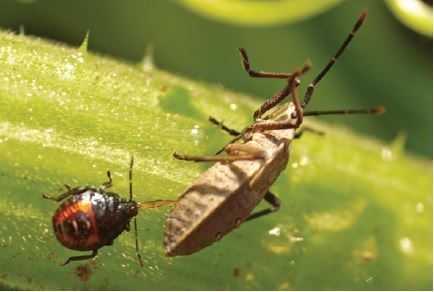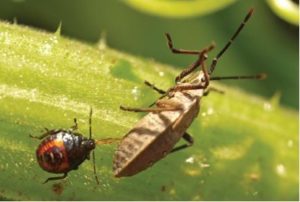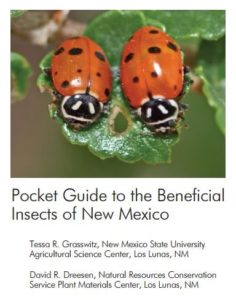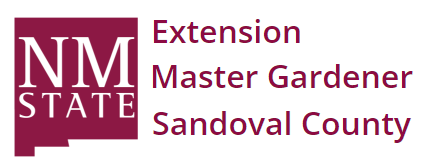Good Bug, Bad Bug

By Dudley Vines
Vegetable gardeners around these parts soon learn to hate the squash bug, but check out this photo:

Spined soldier bug nymph (left) attacking squash bug nymph.
There is a wide variety of naturally occurring beneficial insects that can help keep pest insects under control if they are given a chance. Sadly, however, these insects are often misidentified and in some cases are mistaken for pests, leading to unnecessary and counter-productive insecticide applications.
Like all insects, beneficial species have three basic needs – food, water, and shelter. As far as food is concerned, although these species are predatory or parasitic for at least part of their life cycle, many of them need floral resources (nectar and/or pollen) at various times. Such resources can sustain these insects when prey is scarce, help them live longer, or lay more eggs. One way of attracting these insects to your garden or farm is therefore to plant a mixture of so-called ‘insectary plants,’ which can provide nectar and pollen all season long if properly cared for. Since beneficial insects differ in the size and structure of their mouthparts, not all flowers are equally accessible to all insects. Hence, to benefit the maximum number of beneficial insects, the flower mixture should contain a diversity of species with different bloom periods, flower sizes, structures, and colors.
The Pocket Guide to the Beneficial Insects of New Mexico, funded by the Western IPM Center, highlights some of the beneficial insects commonly found in New Mexico farms and gardens. Tips and suggestions on how to attract and retain such insects are included. A basic core mixture of insectary plants for New Mexico has been developed at New Mexico State University’s Los Lunas Agricultural Science Center and is included in the publication.

All material in this article (except the first line) is from this fine publication, which is available for download at this NMSU link:
http://aces.nmsu.edu/pubs/insects/docs/Beneficial_Insects.pdf
